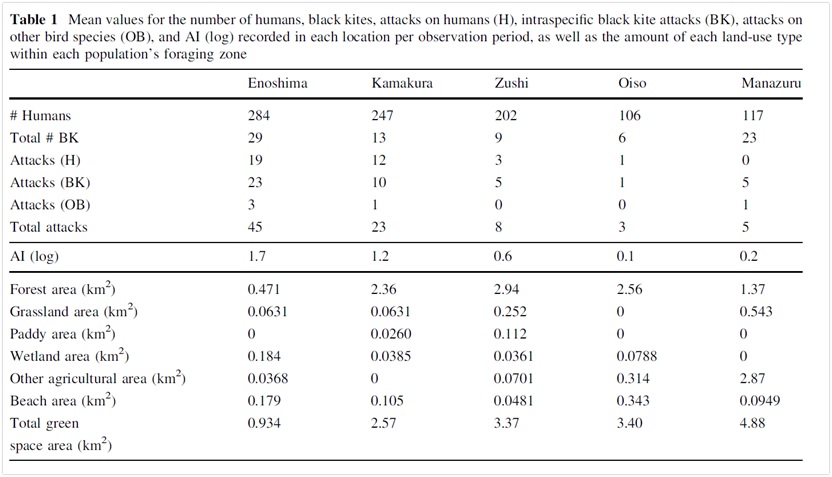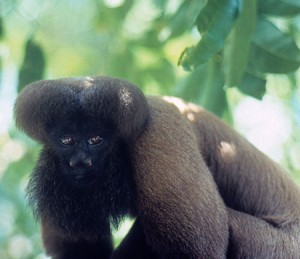Presentation Summary:
Paper reviewed: Urbanization and its implications for avian aggression: A case study of urban black kites (Milvus migrans) along Sagami Bay in Japan
Focus of study: Aggressive and bold nature of Black Kites in Japan
Research question: Is there a link between urbanization and avian (black kite) aggression?
Researchers’ Hypotheses:
- H1 – the more people present in an area with black kites, the more bold/aggressive the birds would be
- H2 – the less viable habitat (green space) in an area, the more bold/aggressive the black kites
Methods:
Field Data: 5 beach areas along Sagami Bay in Japan that are close to each other to increase homogeneity. In each area, an observer recorded numbers of people, black kites, and black kite attacks, from a single observation point within a 2km radius buffer. Data was recorded in Spring, Summer and Spring.
Gis Data: Vector map of Japan was taken, and the amount of green space in every 2km buffer zone was calculated, and broken down by type (e.g. forest).
Analysis:
Aggression Index (AI) Calculated
Data Table, displaying the gathered Field/GIS data and the AI:
Results:
- H1 rejected – no statistically significant correlation between number of human visitors and black kite aggression
- H2 accepted – notable negative correlation (-0.59) between amount of green space and black kite aggression – the more green space, the less bold/aggressive the black kites
- In particular, the more forest/agricultural green space, the less aggressive the birds are
- Out of the three observation periods, birds found to be most aggressive in Spring (mating period)
Conclusion:
- The paper did answer its original question – they found a link between urbanization (in this case, related to loss of habitat) and increased black kite aggression.
- The paper then suggested that Japan needs to do a better job of future land use planning to preserve bird habitat in order to prevent current and future avian aggression
- I rate the paper 6/10
- Limitations of the study/paper – did not account of possibility of 1 bird performing multiple attacks / did not account for many other human factors such as traffic noise, pollution, etc / correlation was not very strong (-0.59) so results could be questioned
Comments on other Presentations:
There were several presentations I found interesting, like Forrest’s paper on the Amur tiger and Khonrad’s paper on the Bearded Saki monkey. Both of these presentations were interesting because they focused on charismatic mega-fauna, the kinds of animals that people want to preserve because they find them aesthetically and culturally pleasing.
In particular, I think Khonrad did a good job of pointing out the shortcomings of the paper he looked at, such as not using GPS trackers attached to monkeys to get far better analysis (including monkey movement during nighttime).



